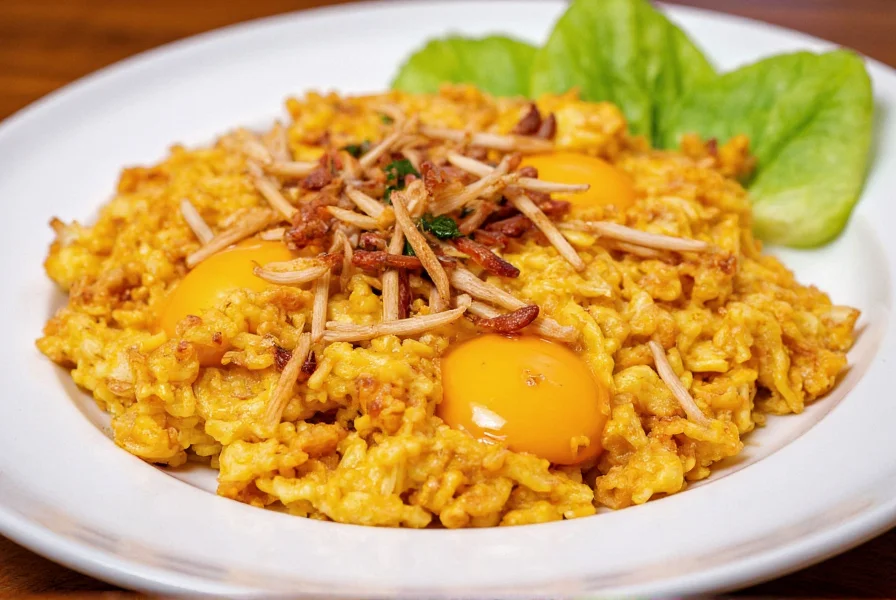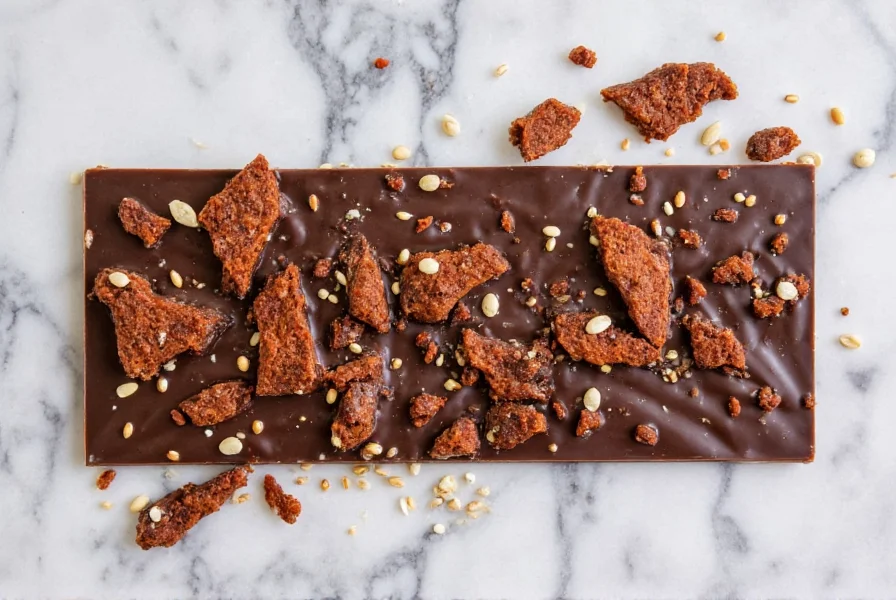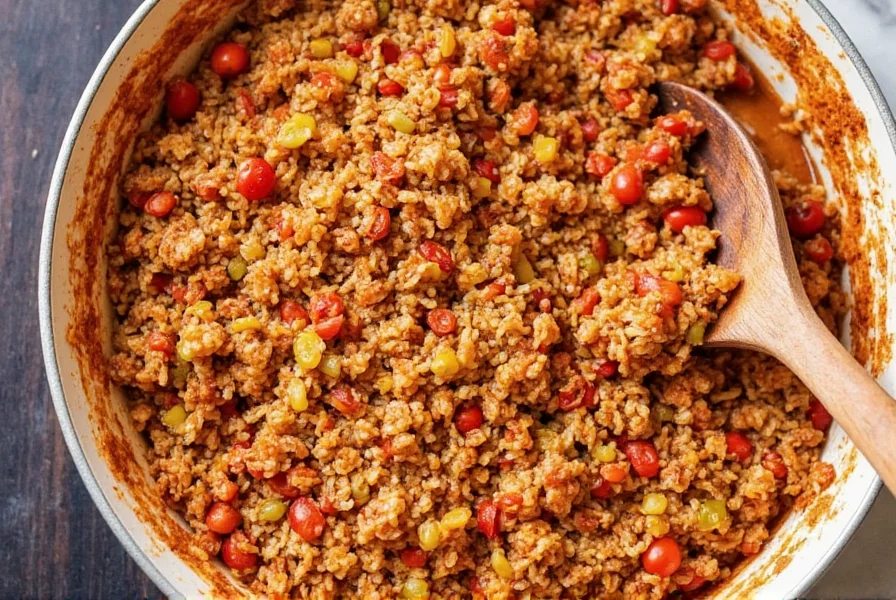Originating from Chinese cuisine, chili crisp has become a global pantry staple thanks to its magical ability to elevate simple ingredients. Unlike basic hot sauces, this condiment delivers layered flavors through its combination of fried aromatics, Sichuan peppercorns, and fermented elements. Understanding how to incorporate chili crisp properly separates adequate dishes from truly exceptional ones.
The Science Behind Successful Chili Crisp Applications
Chili crisp's magic comes from its dual texture and temperature properties. The crispy fried components provide textural contrast when added at the end of cooking, while the infused oil carries flavor compounds that dissolve better in fats than water. When developing chili crisp recipes, consider these fundamental principles:
| Application Method | Best For | Timing | Ratio Guidelines |
|---|---|---|---|
| Finishing oil | Noodles, rice bowls, soups | After cooking | 1-2 tsp per serving |
| Marinade base | Proteins, tofu, vegetables | 30+ minutes before cooking | 1 tbsp per 8oz ingredient |
| Sauce foundation | Stir-fries, dressings, dips | During cooking | 1-2 tbsp per recipe |
| Direct addition | Eggs, avocado, yogurt | Immediately before serving | To taste |
5 Elevated Chili Crisp Recipes You'll Make Regularly
1. Breakfast Revolution: Chili Crisp Scrambled Eggs with Crispy Shallots
This simple breakfast upgrade transforms basic eggs into a restaurant-quality dish through strategic chili crisp application. The key is adding the condiment at multiple stages for layered flavor.
Ingredients:
- 3 large eggs
- 1 tbsp whole milk
- 1½ tsp chili crisp (divided)
- 1 tbsp thinly sliced shallot
- Pinch of flaky sea salt
Method:
- Whisk eggs with milk and ½ tsp chili crisp until fully combined
- Heat nonstick skillet over medium-low heat with remaining 1 tsp chili crisp
- Add shallots and cook until golden (about 2 minutes)
- Pour in egg mixture and stir slowly until softly set
- Finish with flaky salt and additional chili crisp to taste
The dual addition of chili crisp creates both infused background heat and fresh topping crunch. For best results, use a high-quality artisanal chili crisp with visible garlic and chili fragments.

2. 15-Minute Weeknight Dinner: Chili Crisp Garlic Noodles
This pantry-friendly recipe demonstrates how chili crisp serves as both flavor base and finishing element. The infused oil replaces multiple ingredients while adding complex heat.
Pro Tip: Bloom additional aromatics in the chili crisp before adding noodles to maximize flavor extraction. Heat 2 tbsp chili crisp with 2 minced garlic cloves and 1 tsp grated ginger for 60 seconds before incorporating other ingredients.
3. Unexpected Sweet Application: Chili Crisp Chocolate Bark
The surprising pairing of dark chocolate and chili crisp creates a sophisticated sweet-spicy treat that showcases the condiment's versatility beyond savory applications.
Melt 8oz high-quality dark chocolate (70% cacao) with 1 tbsp coconut oil. Stir in 1½ tsp chili crisp until fully incorporated. Pour onto parchment paper, sprinkle with flaky salt and sesame seeds, then chill until set. The chili crisp's fermented notes complement chocolate's bitterness while the crispy elements add texture.

Advanced Techniques for Perfect Chili Crisp Integration
Professional chefs maximize chili crisp's potential through these often-overlooked methods:
- Oil separation: Carefully decant the infused oil for delicate applications where texture would be distracting, like salad dressings or mayonnaise infusions
- Custom blending: Mix chili crisp with complementary ingredients like miso paste (for umami boost) or honey (to balance heat) before application
- Temperature control: Never boil chili crisp-infused dishes, as high heat destroys the delicate fried aromatics and creates bitterness
- Layering: Combine store-bought chili crisp with freshly fried garlic or shallots for enhanced texture and flavor complexity
Common Mistakes That Ruin Chili Crisp Dishes
Even experienced cooks make these critical errors when working with chili crisp:
- Overheating: Adding chili crisp to already smoking-hot pans burns the delicate fried components
- Overuse: More than 2 tbsp per serving typically overwhelms other ingredients
- Misplaced addition: Adding at the beginning of cooking instead of as finishing element
- Ignoring regional variations: Not adjusting recipes for different chili crisp styles (Chinese vs. Southeast Asian versions)
Remember that chili crisp should enhance, not dominate, your dishes. The best applications create harmony where the condiment's presence is felt but not overpowering.
Storage and Shelf Life Considerations
Proper storage maintains chili crisp's quality and prevents flavor degradation. Keep opened jars refrigerated and use within 3 months for optimal freshness. The oil may solidify when chilled - simply bring to room temperature before use. Never introduce contaminated utensils into the jar, as this introduces bacteria that accelerate spoilage.
Frequently Asked Questions
Can I make my own chili crisp for recipes?
Yes, homemade chili crisp works well in recipes but requires careful temperature control. The key challenge is frying the aromatics at precisely 300°F (150°C) to achieve crispness without burning. Most home cooks achieve better consistent results with high-quality commercial brands that have perfected the frying process.
What dishes should I avoid using chili crisp in?
Avoid using chili crisp in delicate seafood dishes where its strong flavors would overwhelm subtle notes. It's also problematic in dairy-based sauces where the oil can separate, and in baked goods requiring precise liquid ratios. The condiment works best with robust flavors like noodles, roasted vegetables, eggs, and hearty proteins.
How do I adjust recipes for different chili crisp heat levels?
Start with half the recommended amount and taste before adding more. Commercial chili crisps vary dramatically in heat - some contain ghost peppers while others use milder varieties. If your batch is too spicy, balance with acid (rice vinegar) or sweetness (honey). For milder versions, mix with neutral oil before incorporating into recipes.
Can I substitute chili oil for chili crisp in recipes?
Chili oil lacks the textural elements that define chili crisp, so substitution requires adjustments. For every tablespoon of chili crisp called for, use 2 tsp chili oil plus 1 tsp toasted sesame seeds or crushed peanuts to mimic the crunch. Note that chili oil typically delivers more intense heat with less complexity than proper chili crisp.
Does chili crisp expire and affect recipe quality?
Opened chili crisp maintains peak quality for about 3 months when refrigerated. Beyond this, the fried components lose crispness and the oil can develop rancidity. Using expired chili crisp results in flat flavors and potentially off tastes in your dishes. Always check for sour smells or mold before using older batches in recipes.











 浙公网安备
33010002000092号
浙公网安备
33010002000092号 浙B2-20120091-4
浙B2-20120091-4